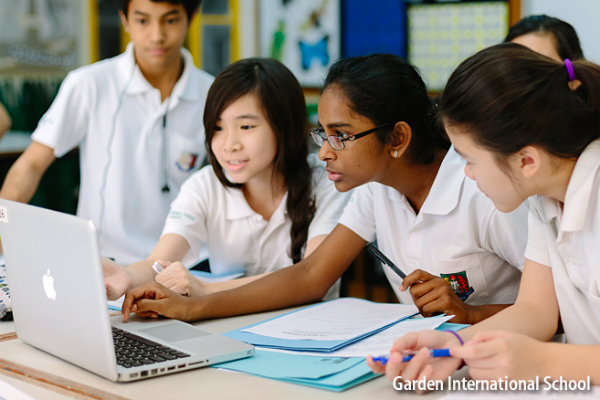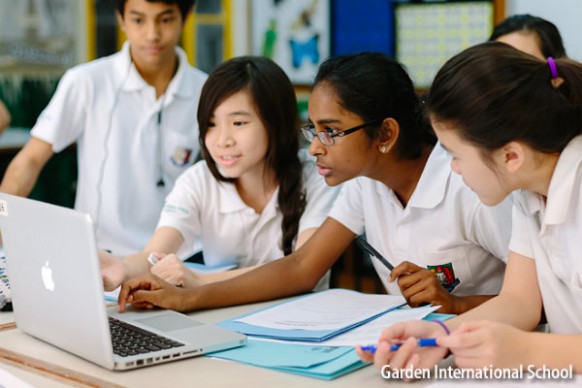A Research on the Growing Trend of Local Students Attending International Schools in Their Own Country
Published by SchoolAdvisor | Aug 17, 2017Latest data shows that there are now 7,017 international schools around the world (56% of which are in Asia), meeting the learning needs of more than 3.5 million students. These international schools use English as the main language of learning. It is estimated that more than two-thirds of the total 3.5 million international school students are local children who seek a quality, English-medium education.

As one of the oldest and most established international schools in South-East Asia, Garden International School has noticed significant changes in the profile of students attending international schools. In Malaysia, the number of international schools, as well as the number of children attending them has surged in the past five years. International schools that started off with catering to students who are not nationals of the host country, such as the children of the staff of multinational businesses, international organisations, embassies, missions or missionary programmes are now no longer just the domain of expatriate children.
Based on this information, Garden International School started working on a research paper regarding the growing trend of local students attending international schools to shed some light on the potential social impact of such a trend.
One of the main findings of this study was how the exposure these local children get at international schools causes them to be set apart within their home and the local environment. They almost always have their opinions questioned and are easily judged for it.
It also becomes more challenging and complicated for the local children to find a place in the world due to being exposed to a different culture within the school while living another at home. The terms 'Third Culture Kids' and 'Cross-Cultural Kids' were is used to describe these international school students who are exposed to more than one cultural environment at the same time. Third Culture Kids are kids who are raised in a culture other than parents'.
A GIS student currently studying for his IGCSEs hails from the northeastern state of Kelantan, a part of Malaysia where allegiances to tradition are strong and most people speak Kelantanese. He recalls how family members remarked on how he’d changed when he visited after he started international school in Kuala Lumpur: “It wasn’t like I felt completely alienated, but I felt I was partly a foreigner rather than being part of Malay culture.”
He isn’t the only international school student who’s found it necessary to moderate their behaviour according to the setting. Some say they wear “two hats” in order to be accepted and understood.
“In an international school you are exposed to a lot,” explains Shaun Gan, 18, who’s now in Year 13. “I don’t like to admit it, but I do wear two hats. There are two parts to my personality that interchange.” Like some of his peers, Shaun also changes his accent and the way he expresses himself when he’s with Malaysian friends compared with when he's speaking to a teacher who might be a native speaker of English.
The second main finding of the study pointed at the fact that parents themselves have to deal with their children who are enrolled in international schools, differently.
Confrontations during adolescence as students test boundaries are hardly unusual, but local children at international schools may feel even more of a distance between their life and their home, while parents might think children who are more questioning are “answering them back” rather than showing the respect that is so valued within Asian society. Most teenagers push boundaries, such as defying home rules, isolating themselves or wanting to spend more time with friends rather than family. At times this can become a clash about cultures between students and their parents. Parents need to accept that their children are growing up in a culturally diverse environment.
Many Malaysian parents have already recognised the need to adapt to a different approach to learning and education. Ahmad Sanusi Kamaruddin, 52, says making the decision in the first place to join an international school was like “crossing a line”; an acknowledgement that things could never be the same. And it’s not only parents who find they have to change. Older generations — people who may be far more traditional — also have to adapt.
The third major finding of the study is that of identity. Local children who have studied at an international school may find they have less of a grasp of the local language, less knowledge of local history, and are labelled as arrogant or elitist simply for having studied at an international school.
For the local students, however, getting a place at an overseas university remains central to their decision to attend an international school, and one for which they’re willing to endure the challenge of being “different”. For many, getting a place at a university in the UK, US or Australia is a sign that their “investment” has paid off, giving them the academic, social and soft skills to succeed in their chosen career.
With so many young people heading overseas, concern has grown about a “brain drain” with Malaysia’s brightest and best carving out lives for themselves internationally without ever returning home. Despite the concern, there are still young Malaysians who retain a strong connection to the land of their birth and a powerful sense of national identity; albeit one rooted mainly in food.
Even with their sometimes limited knowledge of Malay, the more globally-minded understanding of culture and flexibility these young people learned during their school years is what is helping them carve out a niche for themselves back home.
In a series of articles in the following weeks, School Advisor will explore these findings further, bringing insight into the impact international schools bring to the ever-changing Malaysian education landscape.

